Did laps around the Imperial Palace today.
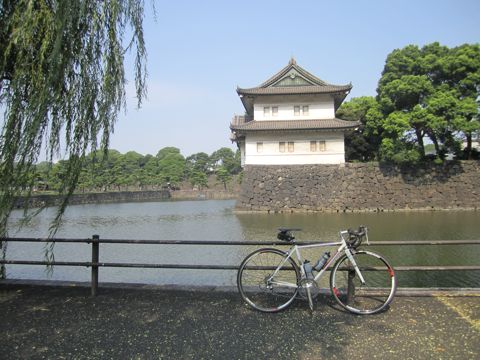
Sucked a few wheels, pulled a few others, and got stupidly lost on the way home. I think I'm starting to like this city...
Did laps around the Imperial Palace today.

Sucked a few wheels, pulled a few others, and got stupidly lost on the way home. I think I'm starting to like this city...
Outings, rides, and bitch-fests all require good coffee: a big steaming cup of black coffee – hold all the extras – or a great Americano. For the past few years, I’d taken the existence of meticulously obsessed coffee shops within walking and riding distance, completely for granted.
But a move to Tokyo presented not just the question of where in the world I should ride, but also where to find those coffee shops where you’ll want to linger, return, and order one more for the road. My coffee experience in Tokyo being a big, fat zero, I turned to Google and stumbled upon Café de l’Ambre. A coffee shop that only offers coffee? It sounded right up my alley.
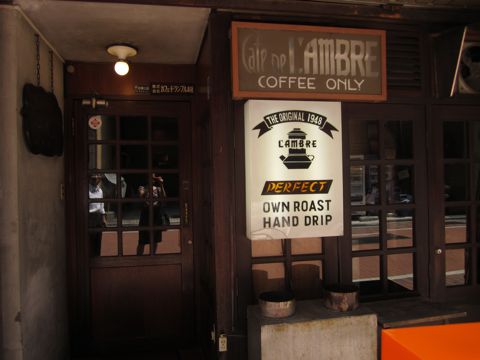
Nestled in Ginza, it’s a small unassuming coffee shop conveniently located near my Dad’s office building. But it wasn’t the location that drew me; rather, it was the fact that Café de l’Ambre offers pourover coffee from aged beans [some from as far back as the 1970s]. A concept I’d never seen or head of before, and with a father willing to shell out over $8 for a cup of coffee, I sought out my first cup of vintage coffee.

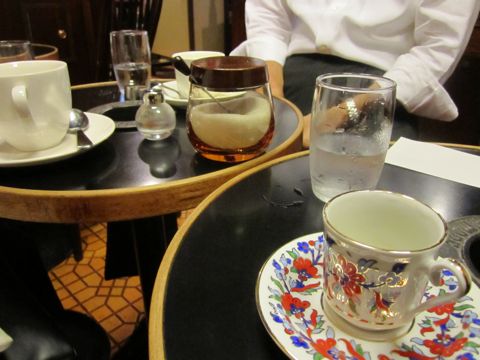
I unfortunately couldn’t get a seat at the bar, near the action, but was offered a seat at a table with built in ashtrays. I glanced at the menu I’d obsessed over via the Internet, wished for a second I had a cigarette [in a long cigarette holder...perhaps with a vintage dress], and ordered a medium pourover of straight/single-origin coffee. The coffee? A 1982 Kivu.
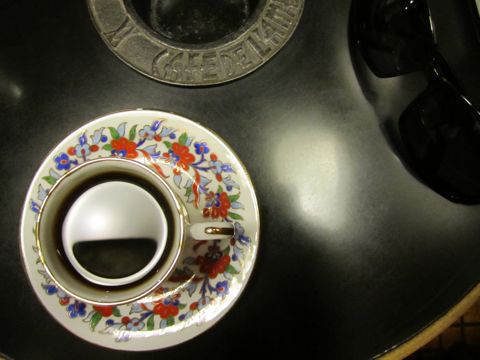
Presented in a cup the size of an espresso cup, a “medium” size got me about 50ml of liquid. Initially, there was a sense that I wasn’t getting what I/my Dad paid for; that this could be grossly overrated. But this cup packed a lot of flavor; moderately acidic with notes of berries, it’s a bright-tasting coffee that I wish I could afford on the regular. But intensely brewed, that small cup left me feeling like a wired squirrel and I almost bounced out of the shop [in heels, so this is saying a lot] without noticing the small roasting set-up out front.
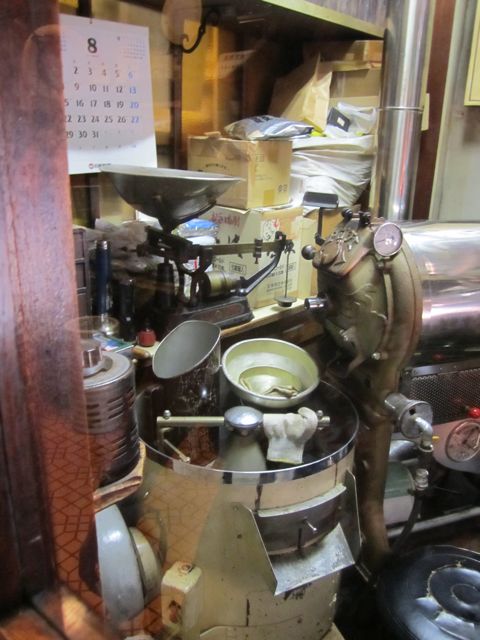
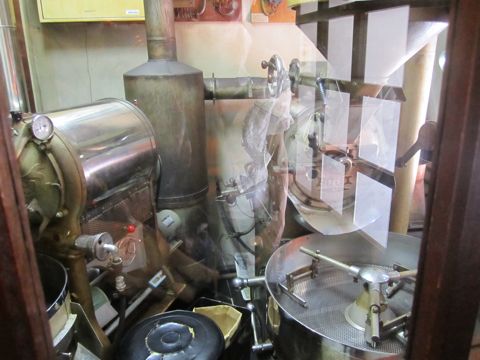
My father grabbed me a card before we left, ready to take on Ginza and the oppressive summer heat. It’s no RSC, true, but Café de l’Ambre, I’ll be back.
Opened my bike case today.

Got my heart broken.
A few days ago, I walked into my aunt’s house to pick up a French press pot. Someone was vacuuming in the kitchen, but oddly, my aunt’s voice came from upstairs. She hurried down and squeezed past the mostly closed kitchen door behind which the vacuumer lurked. “Kaiko’s here, but don’t come out like that,” she said, before returning into view with both a Bodum French press pot and a Chemex.
“It’s, you know, that person,” she said to me and my mother. She was referring to, of course, her husband, my uncle. In response, my mother prepared her sympathetic face as my aunt sighed and shook her head. The game had begun.

Perhaps a uniquely Asian sport, and a particularly popular one among women over 50, my mother and my aunts play this game of spousal complaint often. The consistent nature of the complaints doesn’t seem to detract from the fun, only to add to the vigor of the match itself. No one person wins, unless, of course, someone’s spouse has done something particularly bad. This makes the sport not so much a sparring contest between the female members of my family, but more akin to competitive jabbing of an allegedly ineffective and often [though not always] absent target. And the jabbing is done with unforgiving enthusiasm; perhaps under the irrational hope that these complaints, voiced enough, might spark karma into abolishing incompetent spouses. Or, at the very least, enable them to vacuum more efficiently.
“At least you have someone willing to vacuum the house,” my mother said, throwing down the gauntlet. An invitation to include ungrateful children into the verbal exchange, my aunt gamely replied in kind: “but if Kaiko did it for you, at least she’d do it right.” Too familiar with this game, and unwilling to get sucked into choosing sides or presenting a modicum of reason into the debate, I clutched the Chemex and stared at my feet, making noncommittal guttural sounds when appropriate, waiting it out.
And though half a world away, those same actions reminded me of staring at something else – a sparklingly clean cassette that time – as I made the same somewhat noncommittal guttural sounds and waited that out, too. All 116 miles of it.
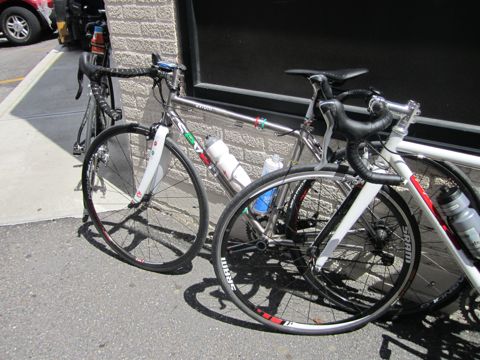
A ride that was presented in characteristically vague terms as “a century,” or “a century plus a little more,” it was my last chance to check off a triple digit ride before I left for Japan. Dave N., fully knowing this, laid a fail-proof trap, accompanying the description of the ride with phrases like “it’ll be fun!” and “if you can do 70 miles [my longest ride until two Wednesdays ago], you can do 100…and the rest is, you know, just a little bit more.” It’s true that I knew what I was getting into [to some extent], but there was a lot of voluntary blindness involved, too. When Geoff sent us the ride route, I briefly glanced at it before buying a few extra Bonk Breakers. Dave had said I would get through it. That I would “be fine.” I found faith in the fact that he had faith in me, and so we agreed to meet at Ride Studio Café on a Wednesday morning to ride to Mount Wachusett and back.
The equivalent of a charity ride, but one in which contributions came in the form of pain inflicted on the charity at hand, Dave N., Geoff, Jeremy, and I headed out on the ride on which, Dave N. clarified, I would “do fine,” but perhaps not “be fine.” The loop headed out towards Harvard before picking up the Charles River Wheelmen Climb to the Clouds century route, and included a few “gratuitous climbs” on the way back, courtesy of Geoff. Instructed to stay on Geoff’s wheel, I took an Aleve, stuffed my pockets full of food, and tried to hang on.
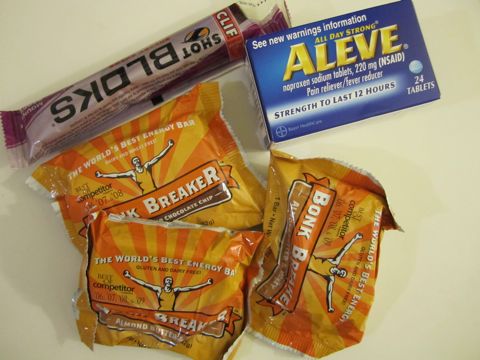

My naïve belief that Nagog Hill and Oak Hill were going to be the worst of it [excluding Mount Wachusett] was, simply put, stupid. “Didn’t you look at the ride route?,” Dave said, “you do know it said 8,000 feet of climbing, right?” “I don’t even know what that means,” I gasped, spinning with aching legs. Geoff mashed up the climbs in his big ring while Dave stayed behind my lagging wheel, both barely breaking a sweat. Slogging up to the visitor’s center of Mount Wachusett [we didn’t go all the way to the top, although Geoff tried] at the stunning speed of 6mph, I stared at dizzy disbelief at my sweaty forearms. I considered clipping out and stopping to say “I’m just going to lie down here and die,” but each time deferred that decision for just a little bit longer. Geoff asked if I was still alive. I made my noncommittal guttural sound.
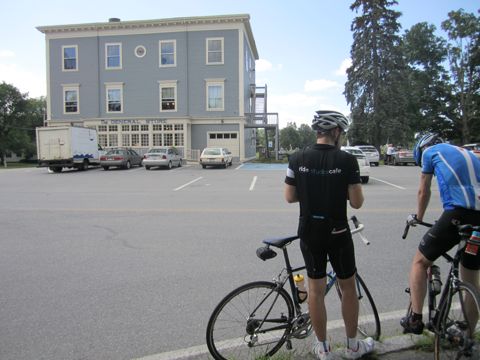
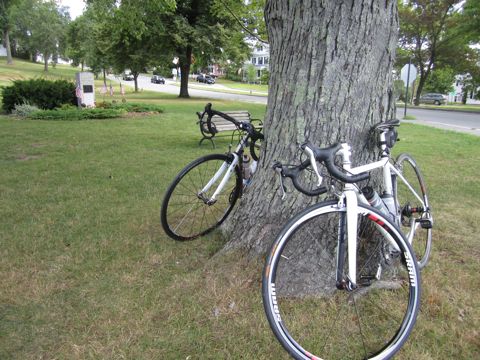

As long as the ride was, it can only accurately be described [as Dave put it] as comparable to childbirth: a painful process but one in which all is forgotten at the end. Well, almost all. Because while I generally did fine, some higher power determined that our ride required a little more epic. So when we hit the gravel-y path through Assabet River Park, a horde of deer files was released, congregating oh-so-conveniently on our asses.
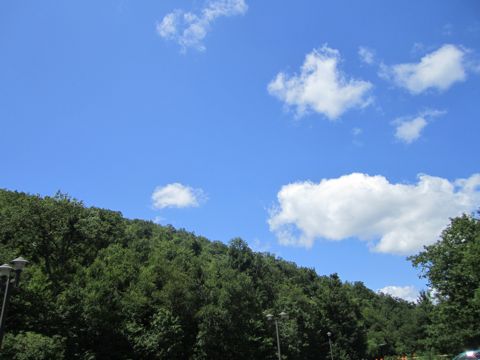
If you are a cyclist with a paint job you might sacrifice your entire epidermis and a few bones for, and also lack most bike-handling skills, the combination of gravel and flies sinking their teeth into the flesh of your backside is close to the 9th circle of Hell. Geoff accelerated, trying to lose the cloud of flies drafting off of him, and I tried to follow without eating sand, aware that should I do so, death by deer flies was certain. They stayed on us the entire way through the park, though, tattoo-ing me with unsightly red slotches all over my butt. A couple marks for the road back to Tokyo.
But I also came back with 116 miles with 7000 feet of climbing in 7.5 hours of riding under my belt, too. A few hours post-century-plus, at a celebratory get-together organized by Dave, I got something else; something as awesome as knowing I could throw down 116 miles: a necklace designed by Rob and crafted out of Seven titanium. A reminder of good friends, good rides, and accomplishments.
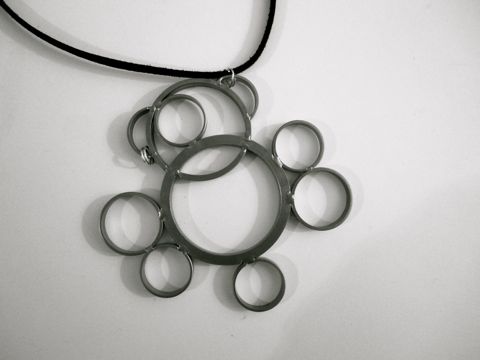
Hopefully with more to come…
Got in two nights ago, and the bikes have arrived safe and sound.

Now on to finding those roads to ride on...
There is a reason I do not ski.
It wasn't adolescent rebellion against my parents' middle class dream of having normal, passably pretty daughters who could not only play tennis, a stringed instrument, and ski. Nor was it the realization that one could very easily die from sitting on an unstable swinging metal chair with not even a pretense of protection against "accidental" falls. It was something much simpler. And as one of those defining moments in my childhood, it branded into me a lesson that, like the last drunk dude at a party, has refused to leave the foreign comforts of my off-kilter psyche.
Other than the extremely un-hip nature of long underwear and most gear related to skiing, I never had a problem with it. The act of sliding down a snowy mountain on a pair of fiber glass planks, though not the most entertaining of experiences, seemed to make my parents happy. And so, when we arrived at our mountains, I would zipper up into a pink snowsuit; an Asian Barbie astronaut launching through the stratosphere to attempt perpendicularity on man-made pow-pow.
It was on one such skiing trip that my sister persuaded me to try sliding down more difficult slopes. I, naive in my belief that perhaps she had my best interests in mind, and that perhaps she even enjoyed my company, climbed eagerly onto the creaking lift. Successfully sliding out of the landing station, I followed my sister's hovering figure, swaying back and forth in the snow. She called out at one point, where our slope connected with another. I remember she raised her right arm, waving. I attempted to stop.

Instead, she later told me, I managed to flip over mid-air, lose at least one ski, and land - mostly face down - in some thorn bushes, my head approximately two yards from a giant cement ski lift pole. My sister nearly lost it, and I descended the slope esconsced in an orange plastic sled.
The experience bought me my ticket out of future forays into winter sports. But a kind of hesitation settled in its place. It emphasized that dabbling in the unfamiliar, particularly when such endeavors require physical coordination, will result in getting knocked around. That no matter what is attempted, you will, at some point, end up with your face in some thorn bushes.
This, predictably, makes habits hard to break, even when change is certain. It has manifested itself into sucking out the things I have learned on a track bike and the forced application thereof to something entirely different [i.e., a road bike]. Possessing the single-minded stubbornness of a triathlete, quads were used to do all my climbing, until longer hills forced me to learn how to spin. Long stretches are still done with hands resting on the drops, and every so often, as I sense the bar end in the cup of my hand, I wish they were a little longer, and perhaps just a touch turned outwards. Despite the generous rake IF set out for me, I still brace myself for the friction of rubber against leather toe, the rub harsh enough to stop a front wheel and scramble my balance.

And the trend continues off the bike: as I prepare to move back to Tokyo, Japan in less than a week [though possibly an opportunity for adventure], I am mostly terrified. I attribute this, in part, to the nearly three decades of life that have burdened me with the sense of holding something, of having something to lose. I’ve built something here, I say to myself, and I’m going to lose it all. The friends, the group rides, the everything. And the fear of slippage, of losing the needle of a supposed compass of identity, is a threat that can loom large enough to discourage the variety in life that would make one richer. It becomes easy, then, to tell myself that this new future mixture of things is somehow impure, that it can never measure up to the pedigreed purity of what I've built stateside. Like the former fixed gear aficianado who struggles to figure out a cassette, I want to stick to what I know, the people I know, the experiences I know. The change is at times overwhelming, and I desperately do not want to say goodbye.
But to let go of one thing [a place, friends, etc.] does not mean to lose it altogether. Life, particularly regarding those things we love to do, is, I try to tell myself, never so mercantile and unforgiving. There are our fair share of crashes, but also the rides that can unfold under our legs, leading to higher altitudes of happiness [or, at least adventure]. Falling into thorn bushes face-first does suck, but given its inevitability, I’ve been told no one really cares that you’ve kissed pavement, as long as you can pick yourself back up, afterwards.

It’s much easier said than done, of course, and I will be the first to admit that I’m struggling to get back up; to face a future away from the people I love and the everything that I know. But hey, I’ve survived change before. And while I often yearned for the familiarity of a fixed gear cog when I first got gears, adaptation to a cassette was not as impossible as it initially seemed. It resulted in sometimes painful rides, slightly faster legs, and the kind of friends I can't stop bragging about. And in the process, I've also learned that the shifting, the push inwards [though so unfamiliar at first and thus subject to resistance], can even result in a saved breath, however brief, before the next climb approaches.